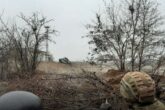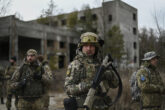March 17, 2021
Simulating War: Three Enduring Lessons from the Louisiana Maneuvers
On Monday, Sept. 15, 1941, a special kind of war was declared. As a tropical storm sent torrential rains throughout the Gulf of Mexico, swelling rivers and caking the ground in mud, 472,000 troops bivouacked between Shreveport and Lake Charles, Louisiana, for the largest (simulated) force-on-force battle in U.S. history. The opposing “red” force’s mission: invade “blue” territory and destroy the enemy concentrated near Lake Charles. Over the course of five days, a small, mobile red force and a numerically superior blue force maneuvered over 3,400 square miles, engaging in a series of tank and antitank skirmishes from the Red River to the Leesville-Many highway. At 15:30 on Friday, just as the red force’s eastern flank at Natchitoches started to crumble, the exercise was halted. Blue had seemingly prevailed.
Sept. 15 was the start of the Louisiana Maneuvers, a series of four exercises that took place over two separate venues — the Louisiana-Texas border and the Carolinas — with each spanning vast, scarcely populated areas of dense forests, uncharted swamps, and river crossings. The maneuvers can be heralded as a logistical achievement: At no other time has there been such a concentration of man and materiel on U.S. soil. However, their true worth was as a “combat college for troop leading” and as a field laboratory to test and train for emerging operational concepts. Indeed, notwithstanding some adjudicatory, training, and bureaucratic limitations, the mass exercises played a pivotal role in confirming the necessity of deploying tanks alongside infantry as a combined arms force. Anti-tank guns were verified as an effective countermeasure to armored vehicles. Air-ground integration, despite an initial Army Air Corps bias towards high-altitude precision daylight bombardment, was shown to have value. Perhaps most importantly, the Louisiana Maneuvers confirmed — to Americans, allies, and adversaries alike — that a ragtag group of “civilians in khaki pants” had been molded over the previous two years into a fighting army. While not a panacea, the maneuvers, in short, were the denouement of the U.S. Army’s pre-war mobilization.
The Louisiana Maneuvers — in their scale, scope, and sophistication — can provide contemporary defense planners with a number of valuable and enduring insights.
From the meticulous drills or “bloodless battles” of ancient Roman legionaries to the tabletop Kriegsspiel of Georg von Reisswitz and the more recent use of distributed, virtual, and constructive training architectures, the act of simulating war — whether through maneuvers, exercises, or wargames — has long constituted an invaluable means of training, experimentation, and signaling. In the absence of combat, simulations like the Louisiana Maneuvers can root out weaknesses, refine concepts and technologies, and acclimatize troops to the complex and varied physical realities of the battlefield. They can also allow users to transcend their current realities, ideally by helping them to question and assess those “known unknowns” (and potentially those wicked “unknown unknowns”) that may radically alter the future battlespace. For these reasons, simulation has been touted as a key avenue to imagine and prepare for the contours of future conflict.
Read the full article from War on the Rocks.
More from CNAS
-
Defense / Transatlantic Security
When Defense Becomes Destruction: Austria-Hungary’s Mistake and Ukraine’s RiskThis article was originally posted on War on the Rocks. The southeastern Polish city of Przemyśl, with its elegant 19th century Habsburg-era train station, remains one of the ...
By Franz-Stefan Gady
-
Defense / Transatlantic Security
Ukraine’s Catch-22 MomentThis article was originally published in the Financial Times. In Joseph Heller’s wartime classic, Catch-22, the protagonist Yossarian seeks out the US army surgeon Doc Daneeka...
By Franz-Stefan Gady
-
CNAS Insights | Budgetary Own Goals Undermine “Speed and Volume”
On November 7, Secretary of Defense Pete Hegseth laid out a plan to overhaul the Department of Defense’s (DOD’s) acquisition system. Placing an emphasis on delivering new capa...
By Philip Sheers, Carlton Haelig & Stacie Pettyjohn
-
Drones: Who Is Making the New Weapons of War?
From Ukraine and Russia to Gaza and Sudan, drones have become a key weapon of war. Which companies are making them, and profiting from this rapidly expanding but controversial...
By Stacie Pettyjohn




